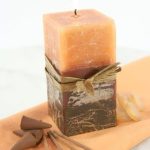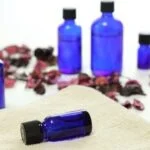With the increasing popularity of alternative and complementary therapies, individuals are discovering the benefits of unconventional approaches to health and well-being. Two such therapies, music therapy and aromatherapy, have shown remarkable individual results in improving mental, emotional, and physical health.
Now, imagine the power of combining these two modalities for a truly immersive healing experience. This article explores the powerful synergy of music therapy and aromatherapy, delving into the science behind each practice, unveiling their connection, and discussing their practical applications for enhanced well-being.
Music therapy has long been recognized as a powerful tool for healing. The effects of sound on the brain have been extensively studied, revealing its ability to stimulate emotions, improve cognitive function, regulate stress levels, and promote relaxation. By harnessing the therapeutic qualities of sound through carefully selected music or soundscape compositions tailored to an individual’s needs, music therapists can inspire profound emotional responses and facilitate positive change.
On the other hand, aromatherapy utilizes essential oils derived from plants to evoke specific emotional or physiological responses in individuals. Through inhalation or topical application of these concentrated oils, aromatherapists tap into the olfactory system’s direct pathway to the brain’s limbic system-the area responsible for emotional processing-to soothe anxiety, relieve stress, uplift moods, and restore balance.
With a wide range of essential oils available-each with its unique therapeutic properties-aromatherapy offers endless possibilities for customized treatments.
Both music therapy and aromatherapy share a common goal: facilitating overall well-being by enhancing mental and emotional states. It is at the crossroads of these two practices where their connection begins to unfold. Combining music with specific scents can amplify both therapies’ effects by tapping into multiple sensory experiences simultaneously-a phenomenon known as synesthesia. This synergy creates a harmonious blend of soundscapes and fragrances that work together synergistically to evoke heightened emotional responses and promote profound relaxation.
In the following sections, we will explore how music therapy and aromatherapy can work together in complementary techniques. We will discuss the creation of harmonious spaces that utilize both these modalities to set the healing environment. Furthermore, we will delve into practical applications, providing specific music and aroma combinations for different therapeutic purposes.
Finally, we will look at real-life success stories through case studies and offer tips for incorporating music therapy and aromatherapy into daily life. By embracing this symphony of sound and scent, individuals can unlock enhanced well-being and a deeper connection to their inner selves.
The Science Behind Music Therapy
Music has long been recognized for its ability to evoke emotions and create a powerful impact on the human brain. In recent years, scientific research has delved deeper into understanding the specific mechanisms of how music affects the brain and has uncovered some fascinating findings. This section will explore the science behind music therapy and how sound can have a profound effect on the brain.
One of the key areas of research in this field is focused on how different aspects of music, such as melody, rhythm, and tempo, can elicit specific emotional responses in individuals. Studies have shown that listening to music activates various regions in the brain involved in processing emotions, memory, and reward.
For example, when we listen to upbeat music with a fast tempo, our brains release dopamine, which is associated with pleasure and motivation. On the other hand, slower music with calming melodies can trigger relaxation responses and reduce stress levels.
Another fascinating aspect of music therapy is its ability to stimulate both hemispheres of the brain. Research has found that listening to music engages multiple areas of the brain simultaneously – including those responsible for motor control, language processing, and auditory perception. This holistic engagement helps strengthen neural connections and enhances cognitive abilities. In fact, studies have shown that incorporating music therapy into rehabilitation programs for stroke patients or individuals with neurological disorders can improve motor skills and speech abilities.
Furthermore, research has demonstrated that even just passive exposure to music can have significant effects on brain activity. Electroencephalogram (EEG) studies have shown that listening to relaxing or meditative music can alter brainwave patterns and induce a state of calmness or deep relaxation. Additionally, certain types of classical or instrumental music have been found to enhance focus and concentration levels in individuals.
The Healing Powers of Aromatherapy
Aromatherapy is a holistic healing practice that uses essential oils to enhance emotional and physical well-being. Essential oils are concentrated plant extracts that have been used for thousands of years for their therapeutic properties. These oils can be extracted from various parts of plants, including the flowers, leaves, stems, and roots.
Essential oils have powerful effects on emotions, mood, and overall well-being. When inhaled or applied topically, these oils stimulate the olfactory system and trigger chemical reactions in the brain that can influence emotions and mental states. For example, lavender oil has been found to promote relaxation and reduce stress, while citrus oils like lemon and orange can uplift mood and promote a sense of happiness.
In addition to their impact on emotions, essential oils also possess physical healing properties. Many essential oils have anti-inflammatory, antimicrobial, and analgesic effects, which can support the body’s natural healing processes. For example, tea tree oil is known for its antibacterial properties and is commonly used to treat skin conditions such as acne.
| Essential Oil | Properties |
|---|---|
| Lavender | Relaxation |
| Lemon | Mood uplifting |
| Tea Tree | Antibacterial |
When combined with music therapy, aromatherapy can enhance its therapeutic benefits. Music has been proven to have a profound impact on reducing stress levels, improving mood, promoting relaxation, and even aiding in pain management. The combination of music therapy with aromatherapy creates a more holistic experience that addresses both emotional and physical well-being.
By incorporating essential oils into music therapy sessions, the aromas can further activate the limbic system and trigger specific emotional responses. For example, playing soothing music while diffusing lavender oil can create a synergistic effect that promotes deep relaxation and reduces anxiety. Similarly, playing uplifting music while using citrus oils can enhance mood and improve energy levels.
Overall, the healing powers of aromatherapy are undeniable. Essential oils have a profound impact on emotions and well-being, promoting relaxation, reducing stress, and supporting physical healing. When combined with music therapy, the therapeutic benefits are amplified, providing a more holistic approach to enhancing overall well-being.
The Crossroads
The Role of the Brain in Processing Music and Scents
The brain plays a crucial role in how we perceive and process both music and scents. When it comes to music, certain areas of the brain are activated when we listen to music, including the auditory cortex, which is responsible for processing sound, and the limbic system, which is involved in emotions and memory. These areas of the brain help us connect with music on an emotional level, leading to feelings of joy, relaxation, or even nostalgia.
Similarly, our sense of smell is closely tied to our emotions and memories. The olfactory bulb, located in the brain’s limbic system, processes smells and communicates directly with the amygdala and hippocampus – two areas associated with emotion and memory. This is why certain scents can evoke strong emotional responses or trigger vivid memories.
The Intersection Between Music and Scents
While music and scents may seem like distinct aspects of sensory experience, research has shown that they share a common thread. Both music and scents have an ability to evoke emotions and create a mood or atmosphere. This shared capacity for emotional impact makes them natural partners in therapeutic settings.
Studies have found that certain types of music can enhance or alter our perception of scents. For example, slow, calming melodies may enhance the relaxation effects of lavender essential oil. On the other hand, fast-paced upbeat music might increase alertness while using stimulating citrus aromas.
Unlocking Synergy: The Combined Effects
By incorporating both music therapy and aromatherapy into a treatment plan, practitioners can tap into a powerful synergy that enhances their overall therapeutic effect. Combining soothing melodies with relaxing scents can create a deeply immersive experience that promotes relaxation, reduces anxiety or stress levels, improves sleep quality, and even alleviates physical pain.
This synergy occurs because both sound and scent have unique physiological effects on the body. Music has been shown to lower heart rate and blood pressure, stimulate the release of endorphins, and reduce stress hormone levels. Similarly, certain essential oils have been found to have calming or uplifting effects on mood, relieve muscle tension, and promote overall well-being.
By harnessing the combined effects of music therapy and aromatherapy, individuals can experience a deeper level of relaxation and emotional healing. This integrative approach allows for a holistic treatment that addresses both mind and body, providing profound benefits for individuals seeking therapeutic support.
Complementary Techniques
What happens when the healing powers of music therapy and aromatherapy combine? Complementary techniques are an exciting area of exploration that delves into how music and aromatherapy can work together to enhance therapeutic outcomes.
One way in which these two modalities can complement each other is by creating a multisensory experience for individuals undergoing therapy. When music and aromatherapy are used simultaneously, they engage both the auditory and olfactory senses, providing a more immersive and holistic healing experience. This can be particularly beneficial for individuals who may have difficulty accessing their emotions or expressing themselves verbally.
Another way in which music and aromatherapy can work together is by enhancing relaxation and reducing stress levels. Music has been proven to have a calming effect on the brain, slowing heart rate, lowering blood pressure, and reducing cortisol levels.
Similarly, certain essential oils used in aromatherapy, such as lavender or chamomile, have soothing properties that promote relaxation. When combined, the gentle melodies of music and the calming scents of essential oils can create a tranquil atmosphere that promotes deep relaxation and aids in stress reduction.
In addition to relaxation, music therapy and aromatherapy can also be used together to energize and uplift individuals. Upbeat music with lively rhythms paired with invigorating scents like peppermint or citrus oils can stimulate the senses and provide a much-needed boost of energy. This combination can be especially useful for individuals experiencing fatigue or low mood.
By combining the power of sound with the influence of scent, complementary techniques involving music therapy and aromatherapy offer an innovative approach to holistic healing. The next section will explore how these two modalities can be used together to create harmonious spaces that support overall well-being.
Creating Harmonious Spaces
When it comes to creating a healing environment, it is important to consider not only the physical elements of a space but also the auditory and olfactory aspects. The combination of music therapy and aromatherapy can work wonders in setting the right atmosphere for relaxation, healing, and well-being. By strategically selecting music and essential oils, you can create harmonious spaces that promote a sense of calm, reduce stress, and enhance the overall therapeutic experience.
Choosing the Right Music
The first step in creating a harmonious space is selecting the appropriate music. Different genres and styles of music have varying effects on our emotions and brain activity. To promote relaxation, slow-tempo music such as classical or instrumental pieces are often preferred.
These types of music tend to have a soothing effect on the listener, slowing down heart rate and inducing a state of calmness. It is important to choose music that resonates with each individual’s preferences and needs as everyone responds differently to different types of music.
Harnessing the Power of Essential Oils
Aromatherapy has been used for centuries to enhance emotional well-being and promote healing. Essential oils derived from plants have unique properties that can impact our emotions, moods, and overall sense of well-being. Lavender oil, for example, is known for its calming effects, while citrus oils like lemon or grapefruit can uplift and energize. When combined with specific types of music, these aromas can amplify their therapeutic benefits.
The Art of Combining Sound and Scents
To create a truly harmonious space for healing, it is important to consider how sound and scent interact with each other. Certain scents may align better with certain types or genres of music. For example, soft instrumental pieces may pair well with calming scents like lavender or chamomile.
On the other hand, more lively music can be paired with invigorating scents such as citrus or peppermint. Experimentation and personalization are key in finding the perfect combination that suits each individual’s needs and preferences.
By understanding the impact of sound and scent on our emotions and well-being, we can harness the synergy between music therapy and aromatherapy to create harmonious healing environments. The careful selection of music and essential oils can greatly enhance relaxation, reduce stress, and promote overall well-being. Whether it is a therapeutic setting or your own personal space, incorporating music therapy and aromatherapy can transform any environment into a serene sanctuary for healing.
Practical Applications
In the realm of music therapy and aromatherapy, there are various specific music and aroma combinations that can be utilized to target different therapeutic purposes. The synergy between these two modalities allows for a more holistic approach to healing and well-being. By strategically combining certain types of music with corresponding essential oils, individuals can enhance the effectiveness of their therapeutic practices.
For relaxation and stress reduction, the combination of soothing instrumental music with lavender essential oil is often recommended. Lavender has long been recognized for its calming properties, while instrumental music without lyrics helps to create a tranquil environment. This combination can be particularly beneficial for those experiencing anxiety or sleep disturbances.
For improving focus and concentration, classical or instrumental music paired with lemon or rosemary essential oils can be effective. The uplifting qualities of these oils help to stimulate the mind, while the absence of lyrics in classical or instrumental pieces minimizes distractions. This combination may be helpful for those studying or working on tasks that require sustained attention.
To promote emotional healing and introspection, slower tempo music such as ambient or nature sounds combined with frankincense or ylang-ylang essential oils can be utilized. Frankincense is known for its grounding properties, while ylang-ylang has been associated with feelings of euphoria. These scents paired with slow tempo music create a conducive atmosphere for processing emotions and self-reflection.
| Therapeutic Purpose | Music Genre | Essential Oils |
|---|---|---|
| Relaxation and stress reduction | Soothing Instrumental | Lavender |
| Focus and concentration | Classical or Instrumental | Lemon, Rosemary |
| Emotional healing and introspection | Ambient or Nature Sounds | Frankincense, Ylang-ylang |
It is important to note that individual preferences may vary, and it may require some experimentation to find the most suitable combinations for each person. Additionally, it is essential to consider any allergies or sensitivities one might have before using essential oils.
By utilizing specific music and aroma combinations, individuals can enhance their therapeutic experiences and promote overall well-being. The power of music therapy and aromatherapy lies in their ability to work harmoniously together, creating a sensory symphony that nurtures the mind, body, and soul.
Case Studies
In recent years, the combination of music therapy and aromatherapy has gained significant attention in the field of holistic healing. This unique approach has shown promising results in enhancing emotional well-being, reducing stress, and improving overall quality of life. Numerous case studies have been conducted to explore the effectiveness of this integrative therapy, showcasing real-life success stories that highlight its transformative power.
One such case study involved a 45-year-old woman named Sarah who was diagnosed with anxiety and depression. Sarah had tried various conventional treatments but saw little improvement in her symptoms. Seeking alternative options, she decided to try combining music therapy and aromatherapy.
During her sessions, Sarah listened to calming instrumental music while inhaling a blend of lavender and ylang-ylang essential oils. Over time, she noticed a significant reduction in her anxiety levels and an uplifted mood. Sarah reported feeling more relaxed, focused, and able to manage daily stressors effectively.
Another compelling case study involved an elderly man named Robert who was suffering from chronic pain due to arthritis. Robert underwent regular music therapy sessions where he listened to personalized playlists tailored to his interests and preferences while simultaneously diffusing a mixture of eucalyptus and peppermint essential oils.
The combination of uplifting music combined with the cooling sensation provided by the aroma helped alleviate his pain significantly. Robert experienced decreased discomfort and improved mobility, allowing him to engage in activities he previously found challenging.
These real-life success stories illustrate the transformative effects that combining music therapy and aromatherapy can have on individuals’ emotional well-being and physical health. While these case studies provide anecdotal evidence for their efficacy, further research is needed to establish clear guidelines for specific therapeutic applications. Nonetheless, the potential for integrating these two holistic practices holds tremendous promise in facilitating deep relaxation, promoting emotional balance, reducing stress levels, managing pain, improving sleep quality, and enhancing overall well-being.
Tips for Incorporating Music Therapy and Aromatherapy in Daily Life
Incorporating music therapy and aromatherapy into your daily life can be a powerful way to promote overall well-being and enhance your mood. Here are some tips for integrating these practices into your daily routine:
- Create a playlist: Take some time to curate a playlist of songs that you find uplifting, calming, or energizing. Experiment with different genres and styles of music to find what resonates with you the most. Consider creating different playlists for different moods or activities throughout the day.
- Choose essential oils wisely: When it comes to aromatherapy, it’s important to choose essential oils that align with your desired effects. Lavender is often used for relaxation and sleep, while citrus scents like lemon or orange can be invigorating and uplifting. Do some research on different essential oils and their properties before making a selection.
- Combine music and scent: Once you have selected your favorite songs and essential oils, try pairing them together for an enhanced experience. Play your chosen music while diffusing the corresponding essential oil in a room diffuser or applying it topically if safe to do so. Pay attention to how the combination of sound and scent affects your mood, energy levels, and overall well-being.
- Practice mindfulness: When incorporating music therapy and aromatherapy into daily life, taking a mindful approach can greatly amplify their benefits. As you listen to music or engage with the aroma, focus on the sensations it evokes in your body and any emotions that arise. Be fully present in the moment rather than letting your mind wander.
- Incorporate rituals: Establishing rituals around music therapy and aromatherapy can help make them a consistent part of your daily routine. For example, you might choose to start each morning by diffusing an energizing essential oil blend while listening to upbeat music as you get ready for the day.
By incorporating these tips into your daily life, you can harness the power of music therapy and aromatherapy to promote a greater sense of well-being, reduce stress, improve sleep, and enhance your overall mood and emotions. Experiment with different combinations and techniques to find what works best for you, and enjoy the transformative effects of sound and scent in your everyday experiences.
Conclusion
In conclusion, the combination of music therapy and aromatherapy offers a powerful and synergistic approach to enhancing overall well-being. By understanding the impact that sound has on the brain and emotions, as well as the therapeutic qualities of essential oils, we can unlock new avenues for healing and self-care. The crossroads between music and scents reveal a profound connection that can be harnessed for optimal results.
When combined, music therapy and aromatherapy become complimentary techniques that work together to create a harmonious environment for healing. The use of specific music and aroma combinations can be tailored to suit different therapeutic purposes, such as promoting relaxation, reducing anxiety, or boosting focus and creativity. By strategically using these techniques in various settings, whether it’s at home or in a clinical setting, we have the ability to transform spaces into healing sanctuaries.
Real-life success stories highlight how the power of combining music therapy and aromatherapy can yield remarkable results. These case studies serve as inspiration for further exploration and application of this integrated approach to well-being. From reducing stress and improving sleep quality to enhancing mood and supporting mental health recovery, the symphony of sound and scent brings forth immense potential for holistic healing.
Incorporating music therapy and aromatherapy into daily life is not only possible but also beneficial. By incorporating simple practices like listening to calming music while diffusing lavender essential oil before bedtime or playing uplifting melodies with an energizing citrus aroma during daytime activities, we can seamlessly integrate these techniques into our routines. Through experimentation and mindfulness, we can discover which combinations resonate most with our individual needs.
Frequently Asked Questions
What are the effects of aromatherapy combined with music therapy?
When aromatherapy is combined with music therapy, it can have a synergistic effect that enhances the overall experience and benefits. Aromatherapy involves the use of essential oils that have certain therapeutic properties and when inhaled or applied topically, they can promote relaxation, improve mood, and reduce stress. Music therapy, on the other hand, uses music to address various emotional, cognitive, and physical needs of individuals.
When these two therapies are combined, the soothing effects of aromatherapy oils can complement the calming and therapeutic effects of music therapy. This combination can help to create an atmosphere that promotes deep relaxation, reduces anxiety and stress levels, uplifts mood, and enhances overall well-being.
Can music therapy and aromatherapy really reduce dental anxiety and fear?
Both music therapy and aromatherapy have been proven to be effective in reducing dental anxiety and fear. Dental anxiety is a common problem among patients of all ages and can lead to avoidance of necessary dental treatments. Music therapy involves using carefully selected music to help distract patients from their anxieties during dental procedures, creating a more comfortable environment for them.
Aromatherapy, on the other hand, can provide a calming effect through the use of essential oils like lavender or chamomile which are known for their relaxing properties. Utilizing both therapies simultaneously during dental visits can help create a soothing atmosphere that reduces anxiety levels significantly, making patients feel more at ease during their treatment.
What are the disadvantages of music therapy?
While music therapy offers numerous benefits for individuals dealing with various conditions or situations, there are some potential disadvantages worth considering. One key disadvantage is that not everyone responds positively to all types of music used in therapy sessions. Musical preferences vary greatly from person to person so finding the right type of music that resonates with each individual’s taste may take time and effort.
Additionally, some individuals may find it challenging to engage fully in music therapy sessions if they are not comfortable sharing their thoughts or emotions through musical means. Another drawback is that in certain situations, music therapy may not be feasible or accessible due to constraints in resources, such as a lack of qualified music therapists or appropriate musical instruments. Overall, while music therapy has proven to be beneficial for many individuals, it is important to consider the potential limitations and adapt the therapy approaches accordingly.

Are you looking for a natural way to improve your health and wellbeing?
If so, aromatherapy may be the answer for you.





